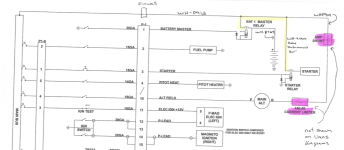Question for the brain trust.
Working on hooking up the alternator on my RV-14A. The WH-P909 wire goes from the alternator to through the firewall.
That doesn't make sense to me, and I can't seem to find a reference to it anyplace else. How is everyone else wiring the alternator power?
Thanks,
-Dan
Working on hooking up the alternator on my RV-14A. The WH-P909 wire goes from the alternator to through the firewall.
That doesn't make sense to me, and I can't seem to find a reference to it anyplace else. How is everyone else wiring the alternator power?
Thanks,
-Dan





